Podcast
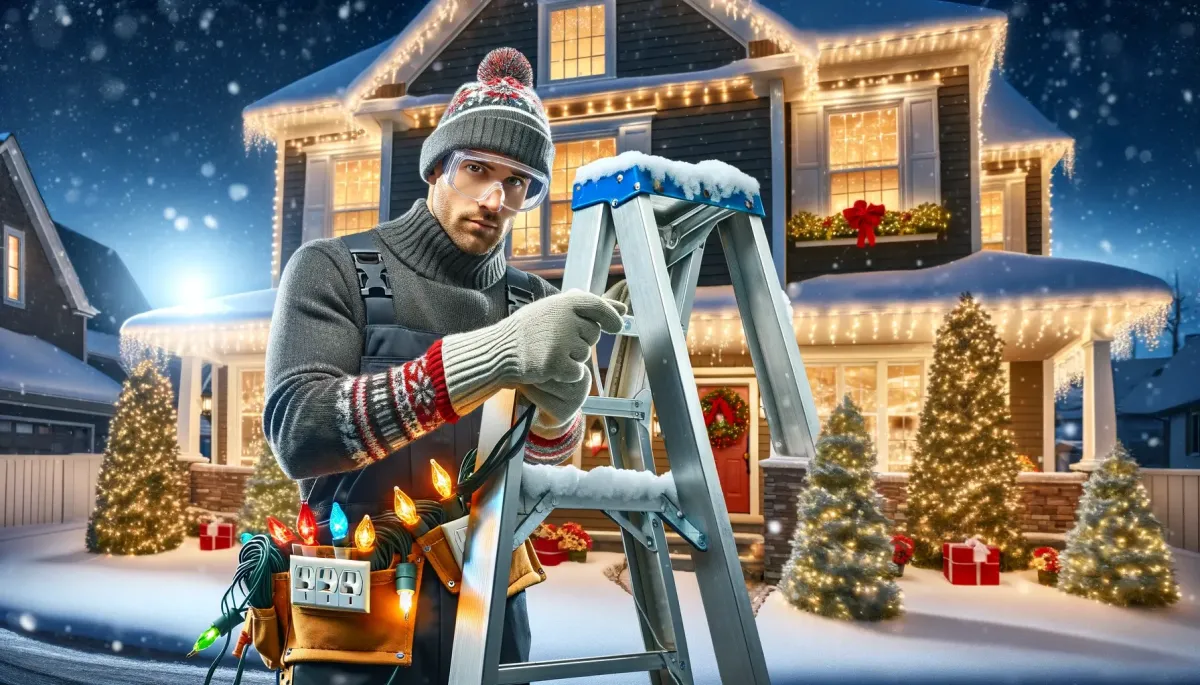
Shining Brightly and Safely: Essential Electrical Safety Tips for Christmas Light Installers
The holiday season brings a magical transformation to neighborhoods as houses illuminate with festive lights and decorations. For professional Christmas light installers, ensuring these displays are both beautiful and safe is paramount. Electrical safety is crucial to prevent accidents and ensure the joy of the season isn't marred by avoidable mishaps. This post aims to provide comprehensive best practices for electrical safety during outdoor Christmas light installations, ensuring that both installers and homeowners can enjoy the festive spirit worry-free.
Understanding Electrical Hazards
Electrical hazards are a significant concern when dealing with Christmas light installations. Awareness and recognition of these hazards can prevent accidents and ensure a safe working environment.
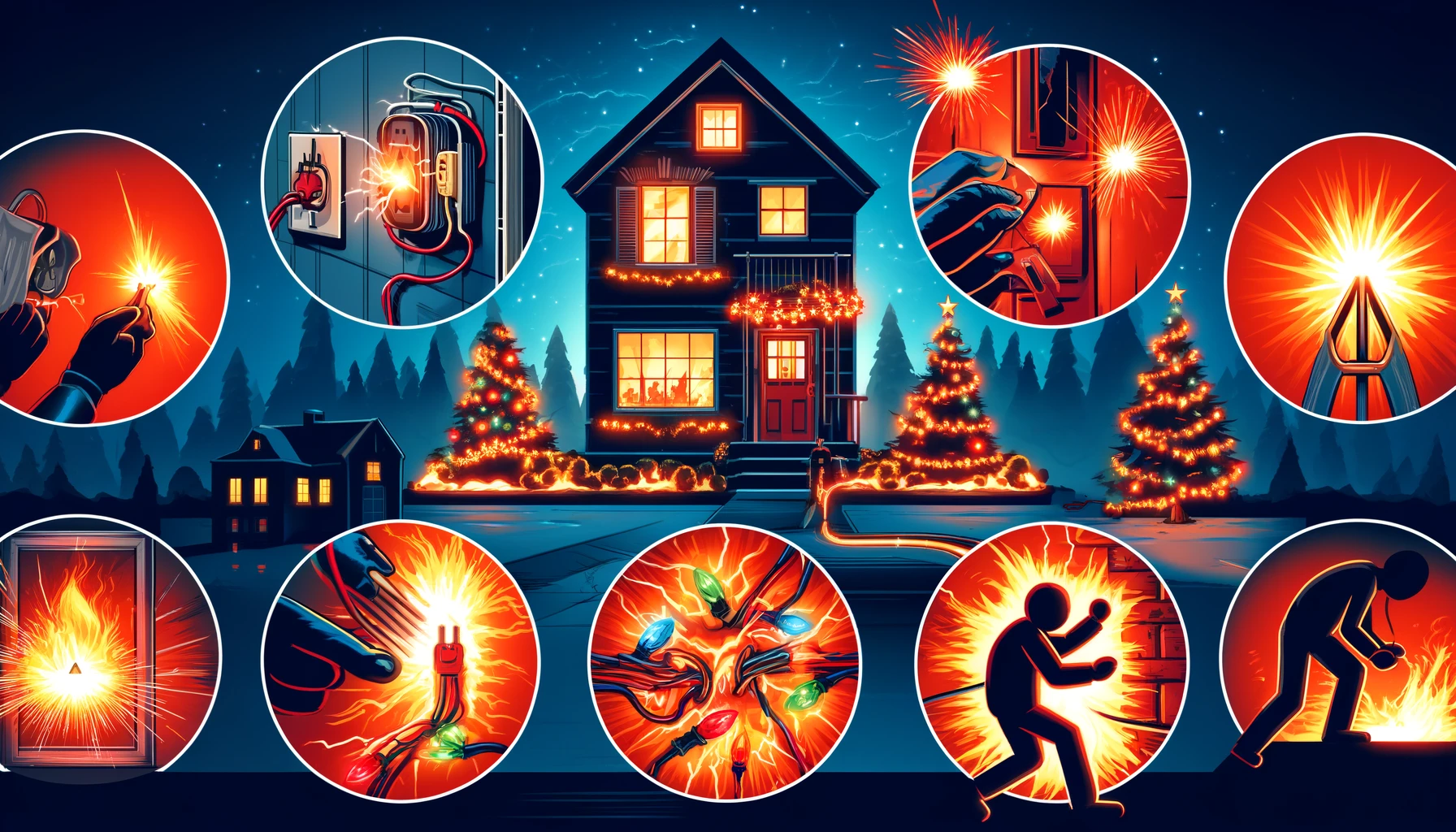
Common Electrical Hazards
Electrical Shocks: Direct contact with live wires or faulty equipment can cause severe electrical shocks, leading to injury or even death.
Short Circuits and Fires: Faulty wiring, damaged lights, or overloading circuits can result in short circuits, which may lead to electrical fires.
Overloaded Circuits: Using too many lights on a single circuit can cause overheating and potential fires.
Recognizing these hazards helps in taking necessary precautions, making the installation process safer.
Preparing for Safe Installation
Preparation is the key to a safe installation. A thorough pre-installation checklist and the use of appropriate personal protective equipment (PPE) can significantly reduce the risk of accidents.
Pre-Installation Checklist
Inspecting Lights and Electrical Equipment: Before installation, examine all lights and equipment for any signs of damage. Check for frayed wires, broken bulbs, and other defects.
Verifying Wattage and Amperage Ratings: Ensure that the lights you plan to use are within the safe wattage and amperage ratings for your home’s electrical system. This helps in preventing overloads.
Ensuring Outdoor Rating: Always use lights and extension cords rated for outdoor use. Indoor lights and cords lack the necessary insulation to withstand outdoor elements.

Personal Protective Equipment (PPE)
Insulated Gloves: These gloves provide protection against electrical shocks while handling wires and lights.
Safety Glasses: Protect your eyes from debris and accidental sparks.
Non-Conductive Ladders: Metal ladders conduct electricity, increasing the risk of shocks. Use fiberglass or wooden ladders to minimize this risk.
Best Practices for Electrical Safety
Implementing best practices during the installation process is essential to ensure safety and efficiency.
Using Ground Fault Circuit Interrupters (GFCIs)
Importance and Functionality of GFCIs: GFCIs are designed to shut off electrical power in the event of a ground fault, significantly reducing the risk of shocks. They are crucial for outdoor installations where moisture can be a factor.
How to Install and Test GFCIs: Install GFCIs in all outdoor outlets. Regularly test them by pressing the "test" button to ensure they function correctly.
Proper Extension Cord Usage
Selecting Outdoor-Rated Extension Cords: Only use extension cords labeled for outdoor use. These cords are designed to withstand weather conditions and have better insulation.
Avoiding Daisy-Chaining: Connecting multiple extension cords together can lead to voltage drops and overheating. Use a single long cord or strategically placed outlets.
Keeping Connections Off the Ground: Elevate connections to avoid contact with water. Use hooks or clips to secure them above ground.
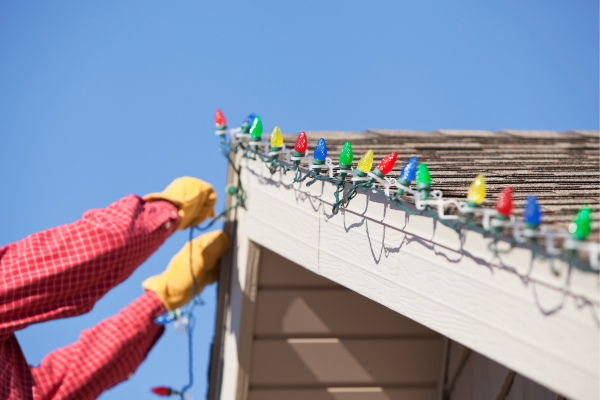
Safe Installation Techniques
Securing Lights Without Damaging Wires: Use plastic clips or other non-damaging fasteners instead of nails or staples, which can pierce the wires and create short circuits.
Keeping Lights Away from Flammable Materials: Ensure lights are not in contact with dry leaves, paper, or other flammable items.
Avoiding Use of Staples or Nails: These can pierce the insulation on wires, increasing the risk of electrical fires. Use specialized light clips instead.
Managing Power Load
Understanding and managing the power load of your light display can prevent overloading circuits and ensure a safe installation.
Calculating Power Load for Lights
Understanding Circuit Limits: Calculate the total wattage of your light display and ensure it does not exceed the capacity of your electrical circuits. Most standard circuits can handle 15-20 amps, translating to about 1800-2400 watts.
Using Power Distribution Methods: Employ power strips with built-in surge protectors to distribute the load evenly and protect against surges.
Tips for Preventing Circuit Overload
Distributing Lights Across Multiple Circuits: Spread your light display across different circuits to avoid overloading a single one.
Using Energy-Efficient LED Lights: LED lights consume significantly less power than traditional incandescent lights, reducing the overall load on your circuits.
Post-Installation Safety Checks
Once the installation is complete, conducting thorough safety checks ensures everything is in proper working order and reduces the risk of future issues.
Conducting a Thorough Inspection
Checking for Loose Connections and Damaged Wires: Inspect all connections and wires to ensure they are secure and undamaged.
Ensuring All Lights Are Functioning Properly: Replace any burnt-out bulbs and ensure all lights are working as intended.
Regular Maintenance Tips
Periodically Checking Lights: Throughout the holiday season, regularly inspect your lights for any signs of wear or damage.
Safely Removing Lights After the Holiday Season: When taking down lights, do so carefully to avoid damaging wires and lights. Store them in a cool, dry place to extend their lifespan.
Emergency Procedures
Despite all precautions, emergencies can still happen. Knowing how to respond can make a significant difference in such situations.
What to Do in Case of an Electrical Emergency
Steps to Take if Someone Gets Shocked: If someone receives an electrical shock, do not touch them directly. Turn off the power source and call emergency services immediately.
Procedures for Dealing with Electrical Fires: Do not use water on electrical fires. Use a fire extinguisher rated for electrical fires and call the fire department.
Contact Information for Emergency Services
Always have the contact information for local emergency services readily available. In case of an emergency, quick access to this information can save valuable time.
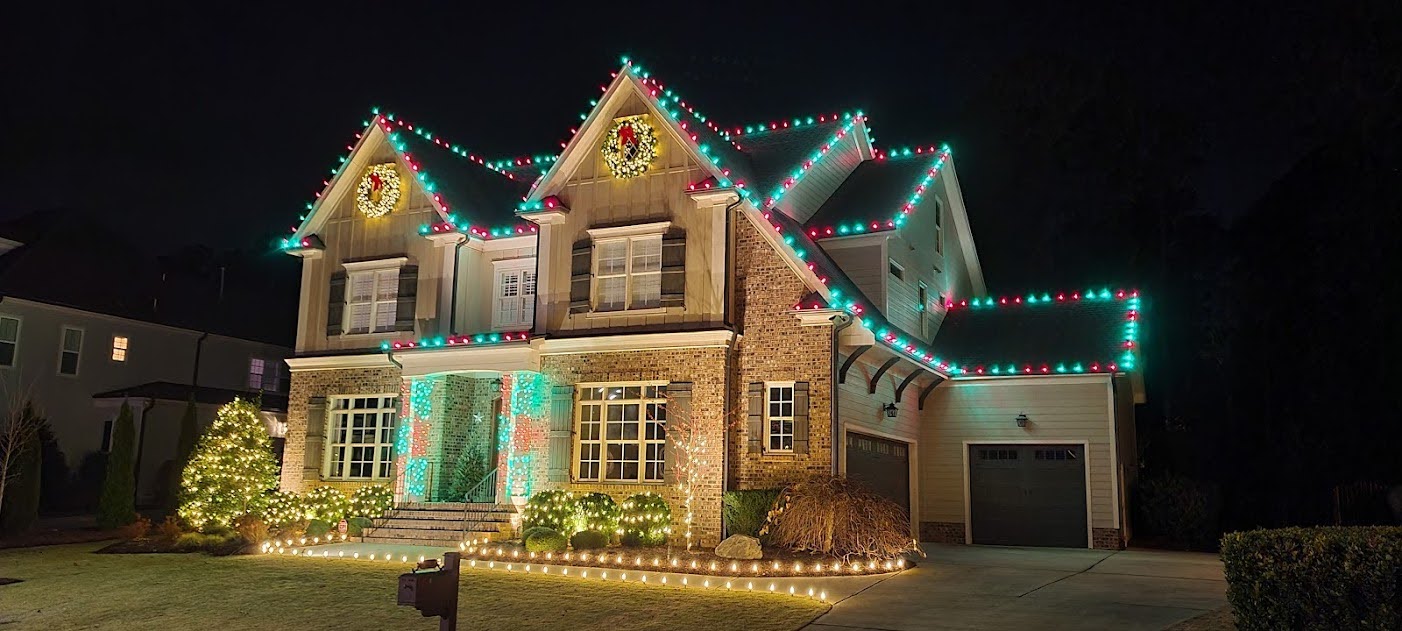
Electrical safety is paramount in professional Christmas light installations. By following these guidelines and best practices, installers can ensure a safe and festive holiday season for themselves and their clients. Prioritizing safety not only prevents accidents but also enhances the overall quality and reliability of the installation work.
As a professional Christmas light installer, your expertise and attention to detail bring joy to countless families. Ensuring electrical safety is a crucial part of your job, allowing everyone to enjoy the beauty of the season without worry. By adhering to these guidelines and continuously educating yourself on best practices, you contribute to a safer, brighter holiday for all.
Remember, safety is not just a one-time effort but an ongoing commitment. Regularly review and update your safety practices to keep up with new technologies and standards. Your dedication to safety will set you apart as a trusted professional in the industry, ensuring your clients can celebrate the season with peace of mind.
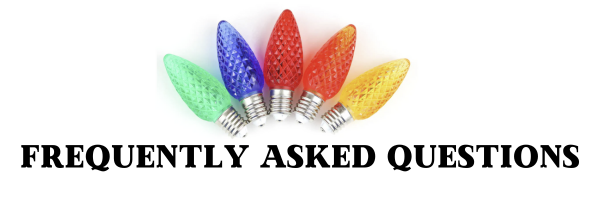
Why is electrical safety important for Christmas light installations?
Answer: Electrical safety is crucial to prevent accidents such as electrical shocks, short circuits, and fires, ensuring both the installer and homeowner enjoy a safe and festive holiday season.
What are common electrical hazards during Christmas light installations?
Answer: Common hazards include electrical shocks, short circuits, fires, and overloaded circuits, all of which can cause serious injuries or damage.
What should I check before starting a Christmas light installation?
Answer: Inspect all lights and electrical equipment for damage, verify wattage and amperage ratings, and ensure all lights and extension cords are rated for outdoor use.
What personal protective equipment (PPE) should be used during installation?
Answer: Installers should use insulated gloves, safety glasses, and non-conductive ladders to protect against electrical shocks and other hazards.
How do Ground Fault Circuit Interrupters (GFCIs) enhance safety?
Answer: GFCIs shut off electrical power in the event of a ground fault, reducing the risk of electrical shocks and are essential for outdoor installations.
What is the proper way to use extension cords for outdoor lights?
Answer: Use only outdoor-rated extension cords, avoid daisy-chaining multiple cords, and keep connections off the ground and away from water.
How can I prevent circuit overloads with my Christmas lights?
Answer: Calculate the total wattage of your lights to ensure it doesn’t exceed your circuit’s capacity, use power strips with surge protectors, and distribute lights across multiple circuits.
What are some safe installation techniques for Christmas lights?
Answer: Secure lights with plastic clips instead of nails or staples, keep lights away from flammable materials, and avoid using fasteners that can pierce wires.
What should be done after installing Christmas lights to ensure safety?
Answer: Conduct a thorough inspection for loose connections or damaged wires, ensure all lights are functioning properly, and perform regular maintenance checks throughout the season.
What steps should I take in case of an electrical emergency during installation?
Answer: If someone is shocked, turn off the power source immediately and call emergency services. For electrical fires, use a fire extinguisher rated for electrical fires and contact the fire department.

Copyright ©2025 All Right Reserved website designed by christmaslights.io
Terms of Service / Privacy Policy
Have questions or need assistance?
Contact us at (855)619-LITE


